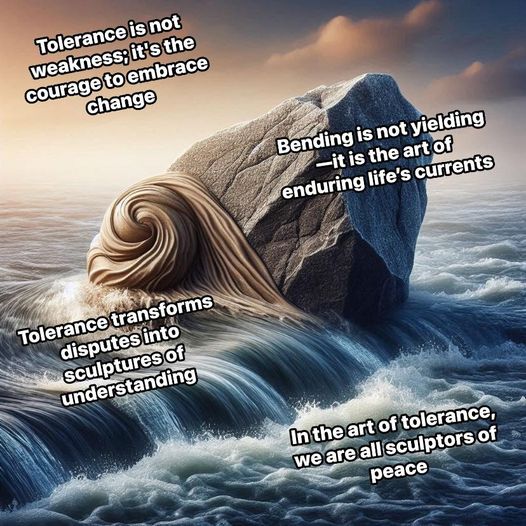
In a bustling village nestled between two mighty rivers, the people often found themselves at odds over trivial matters—whose crops grew taller, whose livestock grazed the greenest fields, or which river carried the sweetest waters. The villagers had become quick to argue and even quicker to raise their voices. Among them was an old storyteller named Baram, known for his quiet wisdom and the tales he spun from the most ordinary events.
One day, as the village erupted into yet another quarrel over whose land was richer, Baram gathered the people by the ancient oak that stood at the heart of the village. “Let me tell you a story,” he began, his voice calm as the waters of a serene lake.
“There were once two stones,” Baram said, “one of granite, hard and unyielding, and one of clay, soft and moldable. When the rains came and flooded the land, the granite resisted with all its might, firm against the current. But the water’s persistence wore it down, chipping away bit by bit, until it was merely a pebble lost in the river’s bed.
The clay, however, let the waters shape it. It twisted and stretched, bending but never breaking. When the rains ceased, the clay had transformed into a beautiful sculpture, molded by the gentle hands of nature. It had endured not by fighting the current, but by allowing itself to flow with it. Its strength lay not in resisting change, but in embracing it.”
The villagers listened as the storyteller’s words settled over them like a soft rain. “You see,” Baram continued, “tolerance is not a sign of weakness; it is a fundamental principle for living. Like the clay, it is not weakness to give way now and then. It is the wisdom to understand that strength does not always come from rigid resistance. Sometimes, it lies in the quiet willingness to adapt, to listen, and to understand.”
Baram paused, his eyes sweeping over the crowd, now hushed and reflective. “When we tolerate, we are not yielding out of fear, but out of a deep understanding that life is a river, and those who learn to flow with it will find themselves shaped into something greater. The strongest tree is not the one that stands unbending in the wind, but the one whose branches sway and dance with the breeze, allowing it to endure the fiercest storms.”
The village, once eager to argue, began to see their disputes differently. They came to understand that tolerance did not mean submission or defeat, but a different kind of strength—a strength that chose to bend rather than break, to flow rather than resist. And from that day on, they found their lives, like the clay, becoming something more than they had ever imagined.
Baram’s story lived on, reminding the villagers that true courage lay not in hardening themselves against each other, but in opening themselves to change, much like the rivers that shaped the very land on which they stood.

